
Transforming agricultural production with IoT
Cellular connectivity helps bolster farming efficiency, productivity and sustainability.
Connecting the world of smart farming
With the exponential growth of the world population, there is a greater requirement to produce more food from sustainable farming methods. But conditions are tough: agricultural land is shrinking, natural resources are depleting, and the ever-changing climate has a huge impact on yield.
IoT helps farmers make smarter and timely decisions. By gathering and analysing data via sensors connected to the internet, farmers can make more informed choices on various aspects of farming.
The shift towards ‘Precision Farming’ techniques, which uses technology to provide continuous observation and measurement so farmers can react in real-time to concerns with their crops, fields, animals and machinery, is welcomed. IoT solutions can help improve crop yields and asset performance (including livestock) whilst reducing operating costs. All of which helps increase profitability whilst minimising the environmental impacts.
Some of the many applications we are connecting...
Asset tracking
Collect data regarding the location, well-being, and health of machinery and livestock.
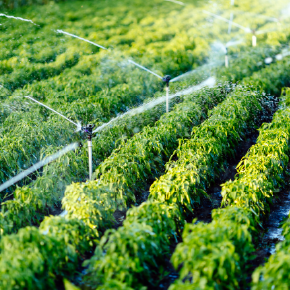
Water management
Utilise smart irrigation to conserve water by measuring usage, auto-switch on/off and leak detection.
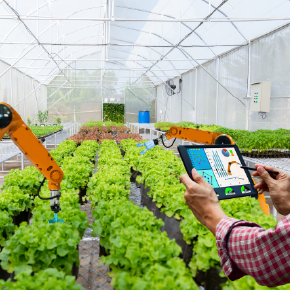
Smart greenhouses
Use IoT to control the climate, removing the need for manual involvement.
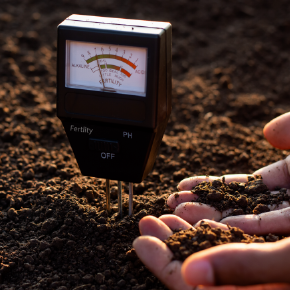
Predictive analytics
Achieve better crop management by monitoring soil, temperature, pressure, rainfall, and humidity.
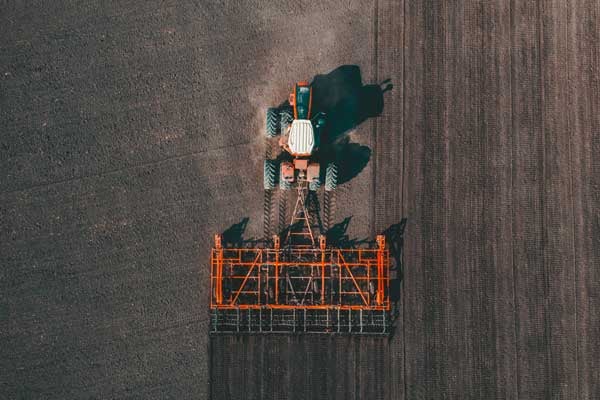
How does IoT improve agricultural productivity?
In order to maximise yields and profits, farmers must increase productivity. IoT technology is allowing farmers to become more productive in a variety of ways. For example sensors, connected to the Internet via IoT, can be incorporated into tractors to determine if they are running at peak efficiency. This will prevent sudden breakdowns or failures enabling the tractor to stay out in the field for longer. Taking a proactive approach to maintenance can enable machinery to be used for longer periods of time which means increased productivity.
Agricultural labour in many countries has declined and created a shift towards less manual labour. To scale back resources, reduce errors and improve quality, farmers are using IoT technologies such as sensors, GPS systems and automated steering for tasks such as soil sampling, temperature monitoring, field mapping and irrigation management. This reduces the need for additional personnel and ultimately produces a higher quality product to sell.
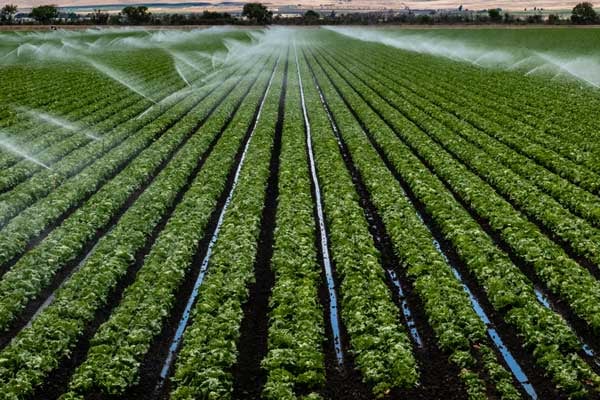
How does IoT enhance agricultural efficiency?
IoT smart farming solutions can monitor the crops in a field with the help of sensors (light, humidity, temperature, soil moisture, crop health, etc.) and automate the irrigation system. They can also select between manual and automated options for taking necessary actions based on this data. For example, if the soil moisture level decreases, the farmer can deploy sensors to start the irrigation. What’s more, the farmers can monitor the field conditions from anywhere.
Guidance technologies are designed to increase the driving accuracy of tractors, combine harvesters, and sprayer operators in the field. Overlap between successive passes is reduced, productivity and machine efficiency is increased, and operational costs (including fuel use, fertilisers, crop protection products and labour costs) are reduced significantly.
By gathering and analysing IoT-captured insight, farmers have the blueprint for spotting inefficiencies they might not have otherwise seen. Armed with that data, they can fine-tune their operations even further to ensure planting and growing decisions are even more sustainable each year.
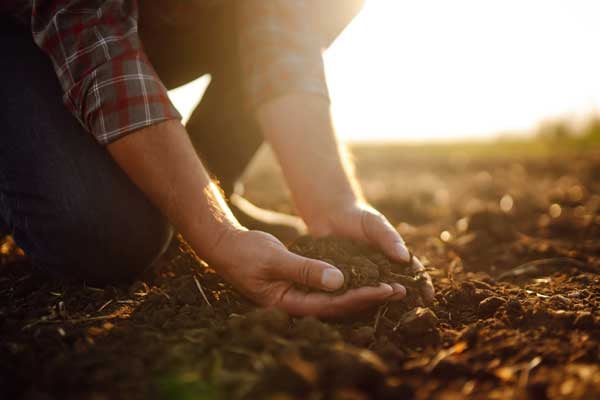
How does IoT improve agricultural sustainability?
Crops need fertile soil with a balanced level of minerals and frequent watering for optimal growth. By knowing the level of moisture and nutrients already in the ground, farmers can coordinate fieldwork and distribute resources with as little waste as possible.
Limited availability of natural resources such as fresh water and arable land means farmers need to act sustainably. Soil moisture data is becoming a key component of sustainable farming programmes as producers contend with increasingly erratic weather patterns. Measuring moisture conditions in their fields helps farmers to maintain soil health, improve water conservation, and increase yield.
Drones, connected via IoT can help with crop yield. They can analyse water levels, soil condition and pest control and with machine learning, that data can be turned into actions without the need for human input. Not only can drones identify crop requirements, but they can also carry out the action needed. Automated fertilising or pesticide rounds can be triggered to meet the real-time needs of crops.
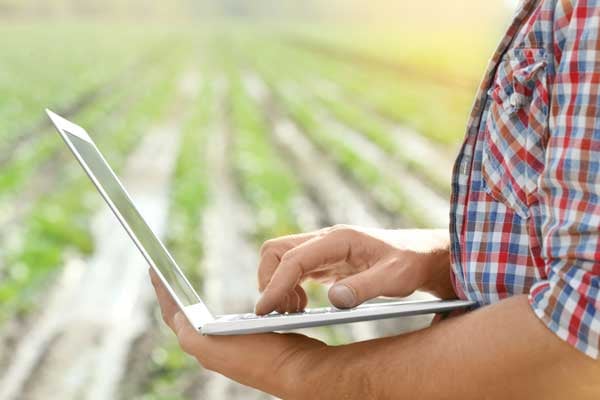
Why cellular connectivity for smart farming?
Many farmers fear that the sheer landmass and rural nature of their activities make connectivity unsuitable. Common concerns around poor quality and patchy coverage are often touted as barriers to adoption. Low power wide area networks [LPWAN] such as NB-IoT and LTE-M will be really beneficial for this. They are often accessible in areas where 2G and 3G aren’t available.
LPWAN that can reach up to a 50-kilometre radius for agricultural applications that typically require low data exchanges and devices that require long battery life, and at a low cost.
Smart farming with the help of IoT is highly productive, efficient and sustainable when compared with the conventional approach.
IoT connectivity solutions for any sector
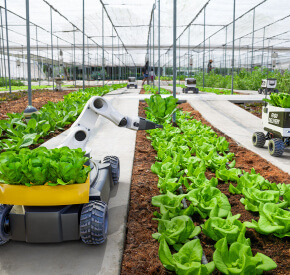
Our IoT solutions enable precision farming, optimise resources and improve yields through data-driven decisions for smart, sustainable operations.

Our IoT solutions offer remote control, real-time monitoring and automation of wearables, home appliances and digital assets for enhanced convenience and security.

Our IoT solutions enable predictive maintenance, optimise distribution and support smart grids, enhancing reliability and sustainability whilst reducing costs.
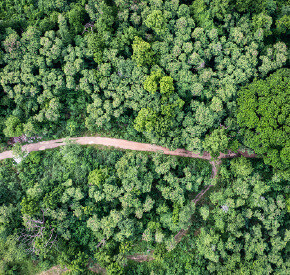
Our IoT solutions offer critical data for environmental protection, regulatory compliance and sustainable resource management, fostering a healthier ecosystem.
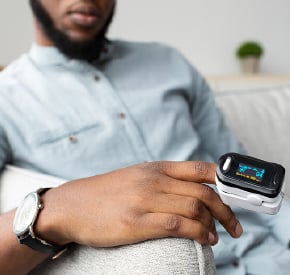
Our IoT solutions enable real-time patient data, predictive maintenance of smart devices and better treatment outcomes for personalised healthcare.
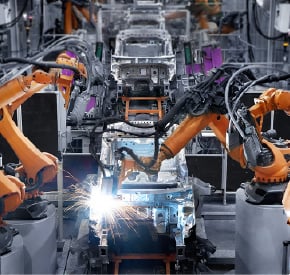
Our IoT solutions improve efficiency, reduce downtime and enhance quality control, transforming operations into smart manufacturing processes.
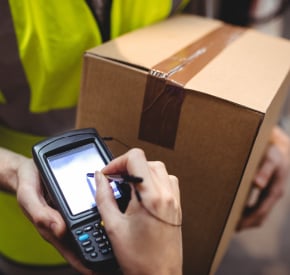
Our IoT solutions optimise supply chains, reduce costs and improve delivery accuracy for better reliability and customer satisfaction.

Improve service delivery and operational efficiency with smart infrastructure, real-time data and automation for a safer, sustainable community.
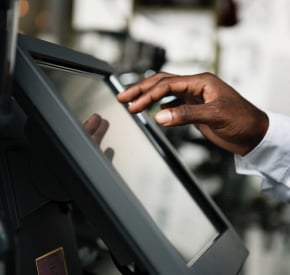
Our IoT solutions optimise stock management, support sales strategies and provide a seamless, personalised shopping experiences.

Our IoT solutions offer comprehensive coverage, improve incident response and enable proactive threat detection, protecting people and assets.

Our IoT solutions optimise energy use, enhance occupant experience and reduce costs for sustainable, intelligent building environments.

Our IoT solutions enable local authorities to improve urban living, through real-time analytics, connected infrastructure and automated services.

Our IoT solutions reduce downtime, improve delivery services and boost customer satisfaction driving innovation and sustainability in transportation.
